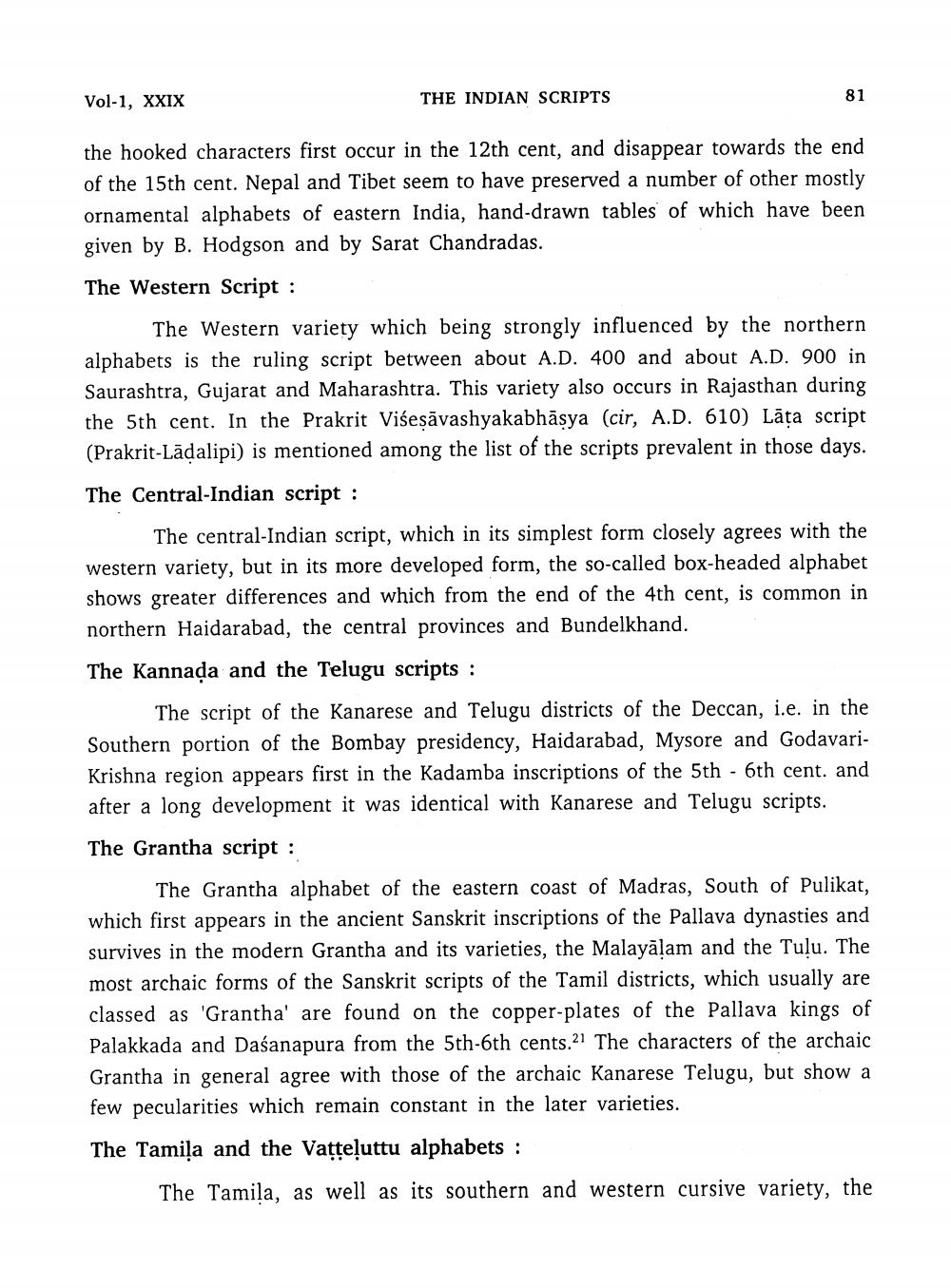________________
Vol-1, XXIX
THE INDIAN SCRIPTS
81
the hooked characters first occur in the 12th cent, and disappear towards the end of the 15th cent. Nepal and Tibet seem to have preserved a number of other mostly ornamental alphabets of eastern India, hand-drawn tables of which have been given by B. Hodgson and by Sarat Chandradas.
The Western Script :
The Western variety which being strongly influenced by the northern alphabets is the ruling script between about A.D. 400 and about A.D. 900 in Saurashtra, Gujarat and Maharashtra. This variety also occurs in Rajasthan during the 5th cent. In the Prakrit Viśeşāvashyakabhāsya (cir, A.D. 610) Lāța script (Prakrit-Lādalipi) is mentioned among the list of the scripts prevalent in those days.
The Central Indian script :
The central Indian script, which in its simplest form closely agrees with the western variety, but in its more developed form, the so-called box-headed alphabet shows greater differences and which from the end of the 4th cent, is common in northern Haidarabad, the central provinces and Bundelkhand.
The Kannada and the Telugu scripts :
The script of the Kanarese and Telugu districts of the Deccan, i.e. in the Southern portion of the Bombay presidency, Haidarabad, Mysore and GodavariKrishna region appears first in the Kadamba inscriptions of the 5th - 6th cent. and after a long development it was identical with Kanarese and Telugu scripts.
The Grantha script :
The Grantha alphabet of the eastern coast of Madras, South of Pulikat, which first appears in the ancient Sanskrit inscriptions of the Pallava dynasties and survives in the modern Grantha and its varieties, the Malayalam and the Tulu. The most archaic forms of the Sanskrit scripts of the Tamil districts, which usually are classed as 'Grantha' are found on the copper-plates of the Pallava kings of Palakkada and Daśanapura from the 5th-6th cents.21 The characters of the archaic Grantha in general agree with those of the archaic Kanarese Telugu, but show a few pecularities which remain constant in the later varieties.
The Tamiļa and the Vatteļuttu alphabets :
The Tamila, as well as its southern and western cursive variety, the




